Killers of the Flower Moon Review
“I love money,” Ernest Burkhart says several times in Martin Scorsese‘s adaptation of David Grann’s Killers of the Flower Moon. “The only thing I love more is my wife.” Whether Ernest’s duplicity is for himself or for his audience, he is certainly lying to someone.
In the world of Scorsese it is impossible to grasp for any sort of earthly reward and attain love; they are mutually exclusive. Whether mobsters losing friends and family to the violence of racketeering or priests renouncing their faith to keep their lives, Scorsese’s films have been, to one degree or another, about the problem of human greed and how it drives a wedge between men and God.
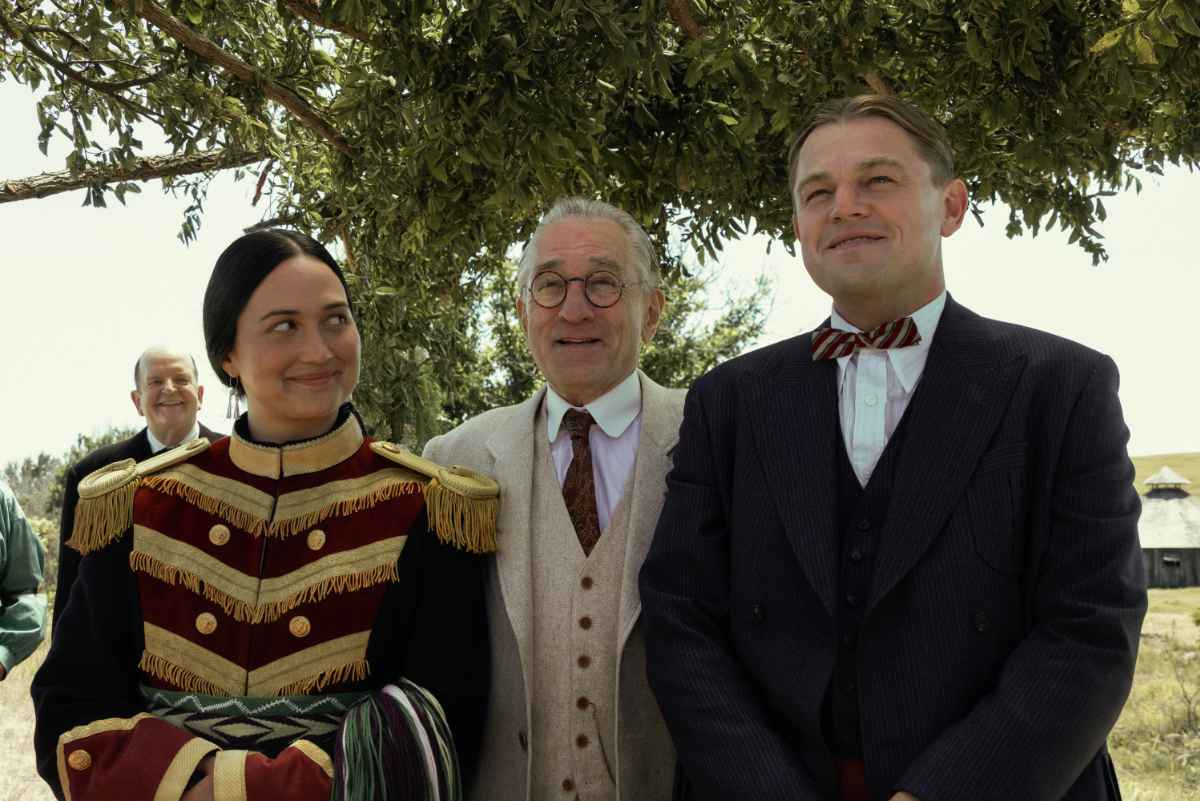
Typically confined to the urban decay of the big city, both from the biographical significance of living his life in New York and the unavoidable symbolism of human-created glass towers crushing nature while they reach up to the heavens, Scorsese’s new film ditches his classic metropolis for the rolling hills of Oklahoma and the home of the Osage nation.
Benefitting from the discovery of massive oil reserves on its land, the tribe and its members became ridiculously wealthy, filling the land around them not just with oil wells but dance halls and golf courses where airplanes and fast cars race and crash in an effort to offer fulfillment to lives no longer worried about everyday needs.
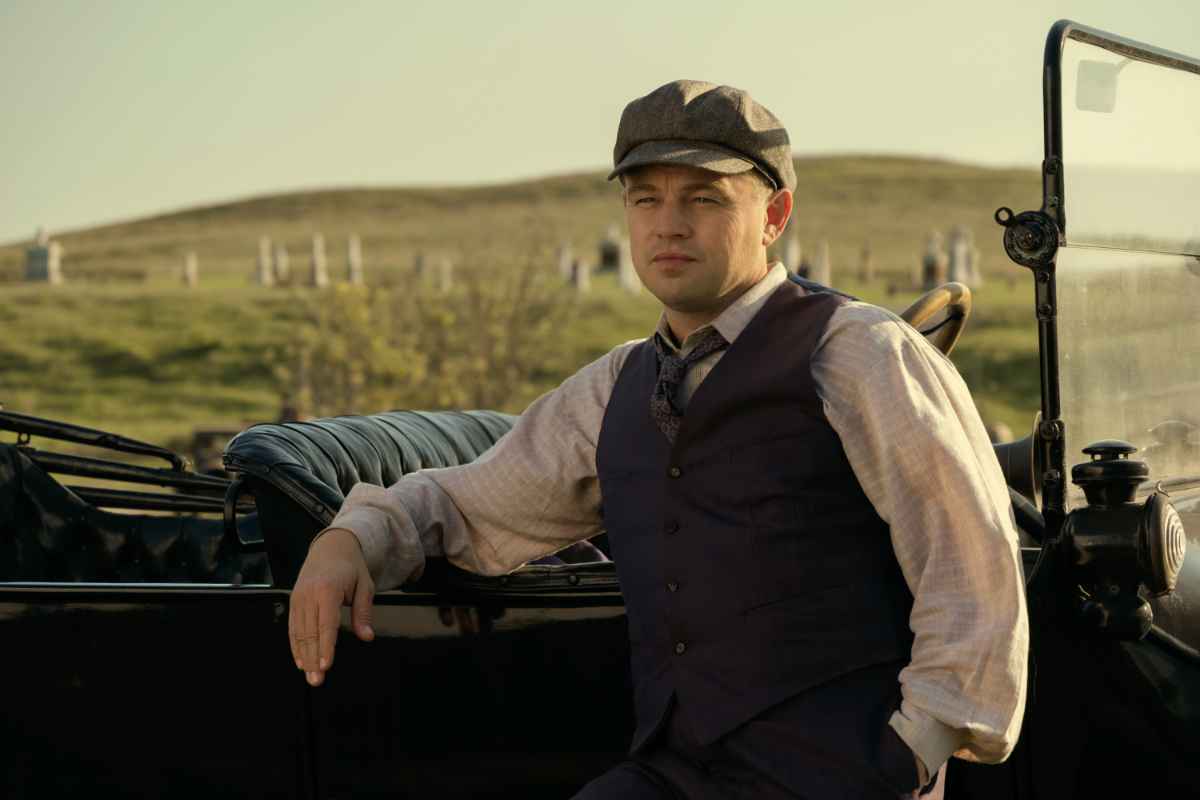
Inevitably other men soon arrive to siphon as much of the wealth for themselves as possible whether by ‘legal’ means — having tribe members declared incompetent to handle their money and forced to have a white guardian to sign off on their expenditures — or otherwise.
A plague soon grips the Osage as tribe members begin die from seeming mischance and outright murder and their wealth disappears into the hands of their husbands and guardians.
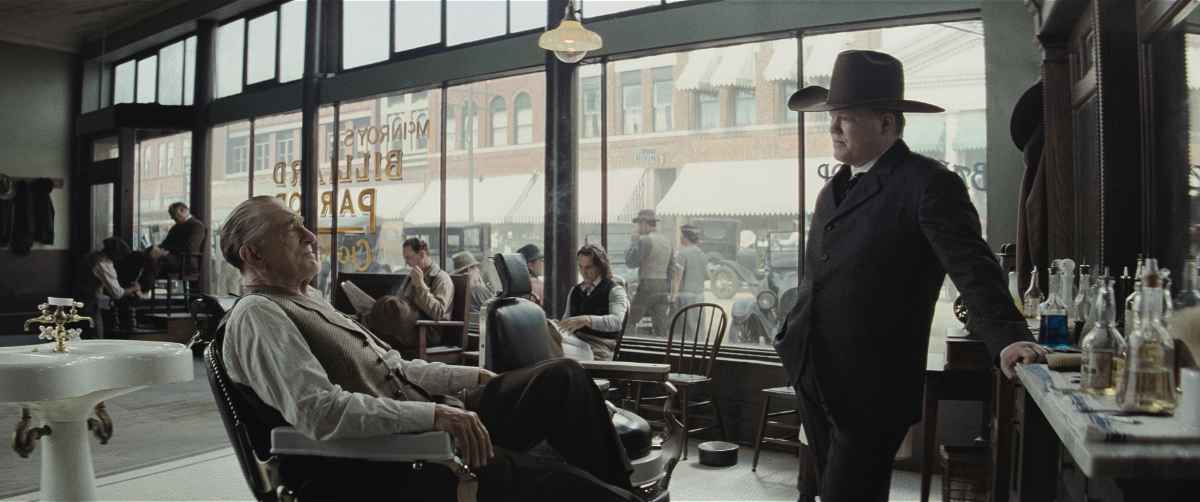
Scorsese’s eye drifts and floats among the mostly undeveloped land around Fairfax and Osage county, where enough wilderness still exists that single house or town becomes a unique focal point on the horizon that stands out from the world around it. The action moved out of the dark alleys of Scorsese’s youth, and the natural cover they gave for men to indulge their worst vices, evil still remains and is not discouraged by the bright light of day. With nowhere to hide, villainy simply shrugs and goes about its business.
Grann’s original work was more procedural crime drama than melancholic sketch of the banality of evil. It followed the investigation of proto-FBI agent Tom White (Jesse Plemmons) to uncover the conspiracy behind the Osage killings. In Scorsese’s film that Sisyphean task can never be completed because there is no single guilty party. It’s a hydra of human nature. Some heads may be cut off but as long as the corrupt body remains there will always be evil; punishment comes not from the law or other people but by being cut off from love and God.
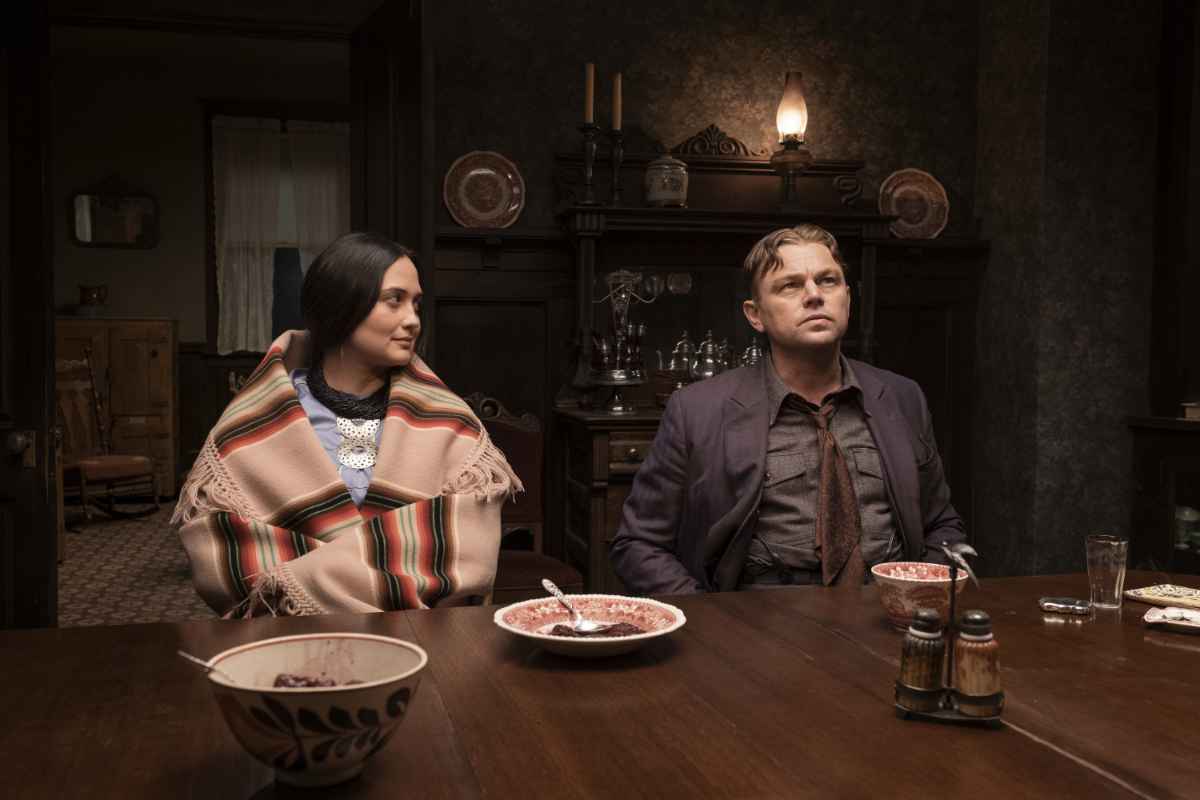
Instead Scorsese flips the point of view around from lawman to criminal to focus on White’s target – Ernest (Leonardo DiCaprio) and his wife Mollie (Lily Gladstone), herself a full blood Osage whose headrights to the tribal oil money would pass to Ernest and their children if anything happens to her. Charming and dimwitted, Ernest is easily urged by his affable uncle William King Hale (Robert De Niro) to marry Mollie who just as easily sees understands what he is doing and why.
A convergence between home and comfort after the horrors of the World War I battlefront he has recently escaped, and the lure of new wealth, Lily is an irresistible temptation for a man like Ernest, offering both a pathway to love and riches. Nor is Lily immune, falling under Ernest’s sway and wanting what he says to be true even as she knows it is not. “Coyote smells money,” she tells him, but also admits to her sisters how attractive she finds him. Neither wants to accept that they must choose between the two.

Ernest can’t understand the difference and never will; Lily does but tries to have both just the same even as her family dies around her. Only Hale understands and accepts the choice, deciding he is fine with just the money. Love is for suckers. Drifting through the violence around him, and orchestrating much of it, Hale’s refuge is a smile and reference to his many friends and his life among them.
He has no stress because he has no doubts about who he is. [There is some unspoken warning among Hale and his ilk to beware the man who enjoys life; it can only be the outcome of ill-gotten gains. An honest man can’t afford to avoid the difficulties of living and at best steels himself to endure them.]
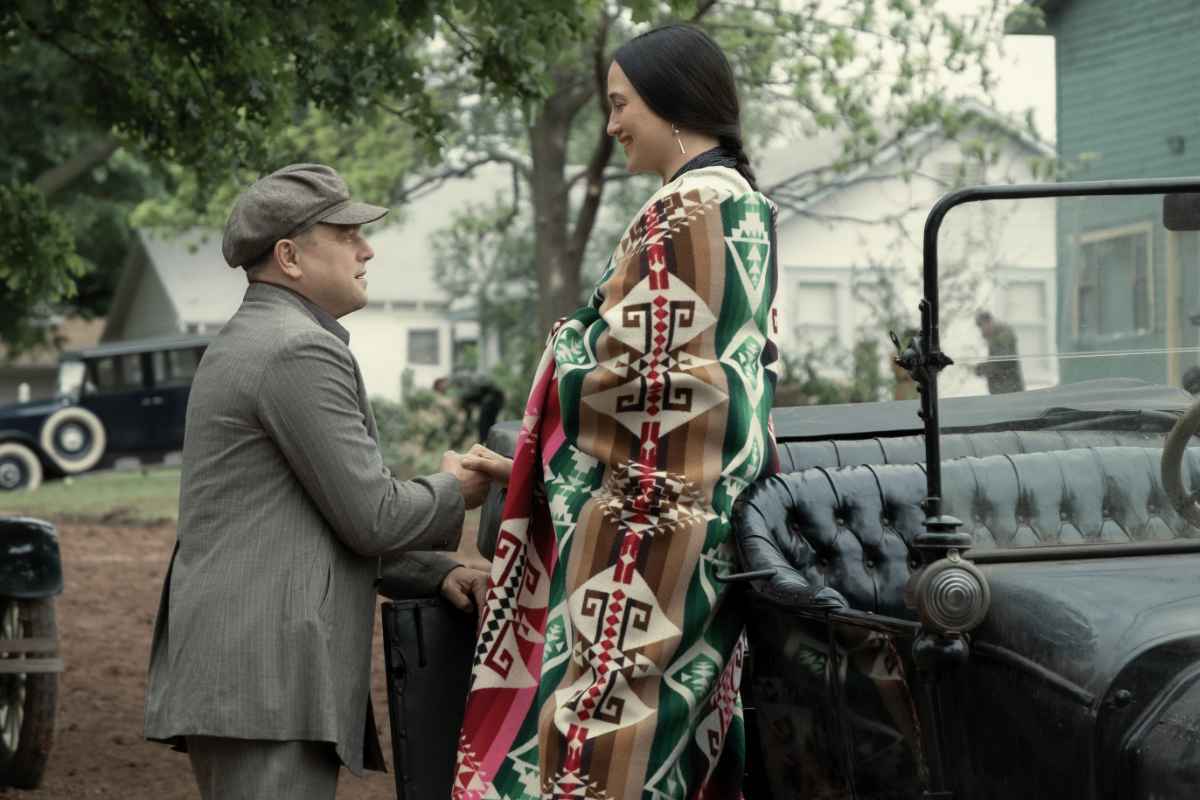
Earthly and spiritual love are usually treated as distinct in Scorsese’s world — related but not directly connected — but in Flower Moon they are inextricably linked through Lily, introduced to us watching a solemn funeral ceremony and its inherent explication of the relationship with God. Immediately afterwards oil literally leaps from the ground, showering the tribe in wealth that will bring them nothing but misery.
The more wealth, the greater the unhappiness grows with families decorating their new modern neighborhoods with lights to ward off evil spirits before abandoning the town completely. Lily’s ex-husband Henry Roan (William Belleau) roams the countryside seeking Prohibition proscribed alcohol to numb his pain or a pistol to end it, the only natural recourse to choosing the profane over the profound.

Switching the narrative around gives Scorsese time to meditate on it fully and completely. Rather than a single death or inciting event he piles up sin upon sin into a towering monstrosity that can’t be avoided. Like one of Chantal Akerman’s neo-realist recreations there is no ultimate event, only the continued swell of events unto eternity.
Even the arrival of the law is no release, just an addition to the panorama, staged to create a feeling of self-determination among the participants but ultimately illusory. All Scorsese can do is expose the play for what it is, eventually even removing the created reality of the film and exposing it as a series of actors and effects repeating lines but unable to change anything about what happened.
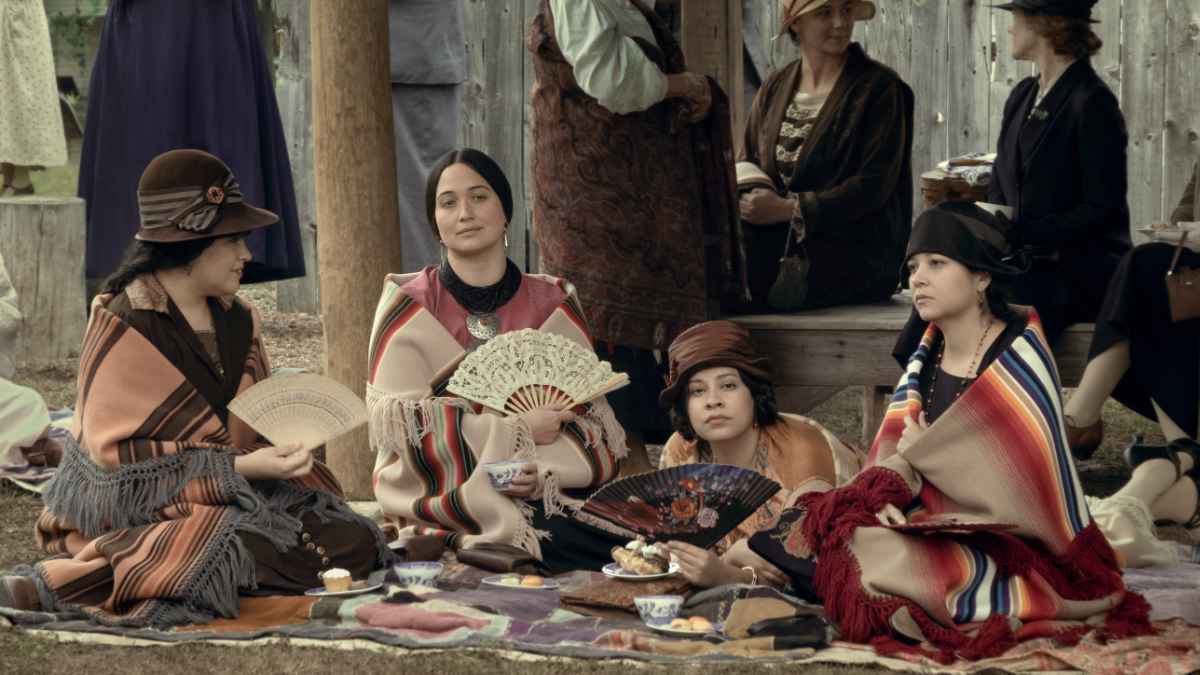
It’s been common to break up Scorsese’s filmography into his gangster films — most associated with his cinematic identity — and his flights into other genres, particularly his more meditative spiritual pieces like Kundun or Silence. But they are all of a piece.
Sometimes the explication of the choice is as subtle as Goodfellas‘ famous Vertigo zoom expanding the distance between Henry Hill and Jimmy Conway and sometimes it is literally Satan appearing in the desert but at the end it is all the same. The only thing anyone can do is recognize the choice and then make it.

KILLERS OF THE FLOWER MOON REVIEW SCORE: 8 OUT OF 10
Paramount Pictures is releasing Killers of the Flower Moon in theaters on October 20, 2023. The film, which is rated R for violence, some grisly images, and language, will be available to stream soon on Apple TV+.
